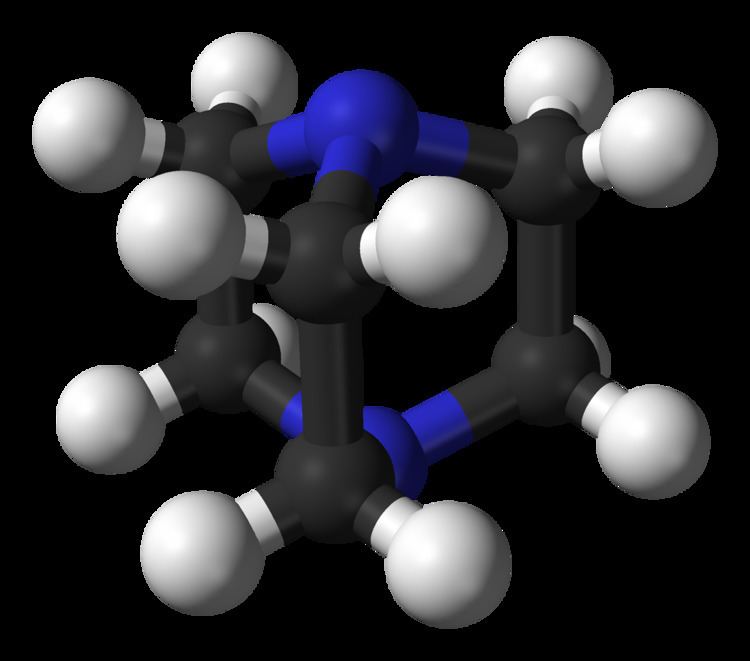Formula C6H12N2 Boiling point 174 °C Appearance White crystalline powder | Molar mass 112.17 g/mol Density 1.02 g/cm³ | |
 | ||
DABCO (1,4-diazabicyclo[2.2.2]octane) is an organic compound with the formula N2(C2H4)3. This colorless solid is a highly nucleophilic amine, which is used as a catalyst and reagent in polymerization and organic synthesis.
Contents
- Reactions and applications
- Catalyst
- Lewis base
- Ionic monomer synthesis
- Quencher of singlet oxygen
- Production
- References
Quinuclidine has a similar structure, with one of the nitrogen atoms replaced by a carbon atom.
Reactions and applications
The pKa of [HDABCO]+ (the protonated derivative) is 8.8, which is almost the same as ordinary alkylamines. The nucleophilicity of the amine is high because the amine centers are unhindered. It is sufficiently basic to promote C-C coupling of terminal acetylenes, for example, phenylacetylene couples with electron-deficient iodoarenes.
Catalyst
DABCO is used as a base-catalyst for:
Lewis base
As an unhindered amine, it is a strong ligand and Lewis base. It forms a crystalline 2:1 adduct with hydrogen peroxide and sulfur dioxide.
Ionic monomer synthesis
DABCO can be used to synthesize doubly-charged styrenic monomers. These ionic mononmers allow synthesis of polyelectrolytes and ionomers with two cyclic quaternary ammonium cations on each ionic pendant group.
Quencher of singlet oxygen
DABCO and related amines are quenchers of singlet oxygen and effective antioxidants, and can be used to improve the lifetime of dyes. This makes DABCO useful in dye lasers and in mounting samples for fluorescence microscopy (when used with glycerol and PBS). DABCO can also be used to demethylate quaternary ammonium salts by heating in dimethylformamide (DMF).
Production
It is produced by thermal reactions of compounds of the type H2NCH2CH2X (X = OH, NH2, or NHR) in the presence of zeolitic catalysts. An idealized conversion is shown for the conversion from ethanolamine:
3 H2NCH2CH2OH → N(CH2CH2)3N + NH3 + 3 H2O